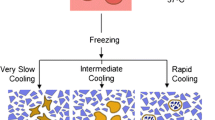Abstract
Kinetics of cell sickling and morphological change have been recognized as important parameters that are correlated closely with altered blood rheology and vasoocclusion in microcirculation. A microfluidic transient hypoxia assay was developed to create repeated hypoxia-normoxia cycles for real time observation of repetitive sickling and unsickling of freely suspended red blood cells (RBCs) from sickle cell disease patients. Cell sickling behavior and kinetics were found to be influenced by its previous sickling-unsickling processes accumulatively, where those sickled RBCs that had a history of sickling in a previous hypoxia cycle would sickle again in subsequent hypoxia/sickling cycles and the collective sickling kinetics became progressively faster (with reduced delay time and higher sickled fraction versus deoxygenation time). Individual sickled RBCs would sickle into drastically different shapes randomly in subsequent hypoxia/sickling cycles, however, the collective shape distribution retained similar characteristics. These observations indicate a gradual worsening trend in sickling kinetics over repeated hypoxia cycles, as well as a relatively stable collective shape characteristics within a limited number of hypoxia-normoxia cycles.






Similar content being viewed by others
References
Eaton WA, Hofrichter J (1987) Hemoglobin-S Gelation and Sickle-Cell Disease. Blood 70(5):1245–1266
Brugnara C (1995) Erythrocyte dehydration in pathophysiology and treatment of sickle cell disease. Curr Opin Hematol 2(2):132–138
Zhou Z, Yee DL, Guchhait P (2012) Molecular Link between Intravascular Hemolysis and Vascular Occlusion in Sickle Cell Disease. Curr Vasc Pharmacol 10(6):756–761
Ballas SK, Mohandas N (2004) Sickle red cell microrheology and sickle blood rheology. Microcirculation 11(2):209–225
Padilla F, Bromberg PA, Jensen WN (1973) The sickle-unsickle cycle: a cause of cell fragmentation leading to permanently deformed cells. Blood 41(5):653–660
Coletta M, Alayash AI, Wilson MT, Benedetti PA, Evangelista V, Brunori M (1988) Single Cell Microspectroscopy Reveals That Erythrocytes Containing Hemoglobin-S Retain a Memory of Previous Sickling Cycles. FEBS Lett 236(1):127–131
Du E, Diez-Silva M, Kato GJ, Dao M, Suresh S (2015) Kinetics of sickle cell biorheology and implications for painful vasoocclusive crisis. Proc Natl Acad Sci U S A 112(5):1422–1427
Li X, Du E, Lei H, Tang Y-H, Dao M, Suresh S, Karniadakis GE (2016) Patient-specific blood rheology in sickle-cell anaemia. Interface Focus 6(1):20150065
Zhujun Z, Seitz WR (1986) Optical Sensor for Oxygen Based on Immobilized Hemoglobin. Anal Chem 58(1):220–222
Asakura T, Asakura K, Obata K, Mattiello J, Ballas SK (2005) Blood samples collected under venous oxygen pressure from patients with sickle cell disease contain a significant number of a new type of reversibly sickled cells: Constancy of the percentage of sickled cells in individual patients during steady state. Am J Hematol 80(4):249–256
Rasband WS, ImageJ U, Health NIo. Bethesda, Maryland, USA, 1997–2011. Image J
Mozzarelli A, Hofrichter J, Eaton WA (1987) Delay Time of Hemoglobin-S Polymerization Prevents Most Cells from Sickling Invivo. Science 237(4814):500–506
Coletta M, Hofrichter J, Ferrone FA, Eaton WA (1982) Kinetics of Sickle Hemoglobin Polymerization in Single Red-Cells. Nature 300(5888):194–197
Hebbel RP (1991) Beyond Hemoglobin Polymerization - the Red-Blood-Cell Membrane and Sickle Disease Pathophysiology. Blood 77(2):214–237
Galkin O, Vekilov PG (2004) Mechanisms of homogeneous nucleation of polymers of sickle cell anemia hemoglobin in deoxy state. J Mol Biol 336(1):43–59
Li H, Lu L, Li X, Buffet PA, Dao M, Karniadakis GE, Suresh S (2018) Mechanics of diseased red blood cells in human spleen and consequences for hereditary blood disorders. Proc Natl Acad Sci U S A 115(38):9574–9579
Allan D, Limbrick AR, Thomas P, Westerman MP (1982) Release of spectrin-free spicules on reoxygenation of sickled erythrocytes. Nature 295(5850):612–613
Knowles DW, Tilley L, Mohandas N, Chasis JA (1997) Erythrocyte membrane vesiculation: model for the molecular mechanism of protein sorting. Proc Natl Acad Sci U S A 94(24):12969–12974
Acknowledgements
The work was supported by National Institutes of Health (NIH) Grants U01HL114476 and R01HL121386. E.D. acknowledges support by the National Science Foundation (NSF) under Grant No. 1635312 and Florida Atlantic University faculty startup grant. The authors thank Dr. John Higgins for providing sickle blood samples and for helpful discussions and Dr. Monica Diez-Silva for help with sample preparation and insightful discussions.
Author information
Authors and Affiliations
Corresponding author
Electronic supplementary material
Supplementary Video S1
Repeated sickling and unsickling of freely suspended sickle cells induced by cyclic hypoxia in microfluidic device (16x speed). (MP4 11.2 mb)
Rights and permissions
About this article
Cite this article
Du, E., Dao, M. Faster Sickling Kinetics and Sickle Cell Shape Evolution during Repeated Deoxygenation and Oxygenation Cycles. Exp Mech 59, 319–325 (2019). https://doi.org/10.1007/s11340-018-00444-5
Received:
Accepted:
Published:
Issue Date:
DOI: https://doi.org/10.1007/s11340-018-00444-5




